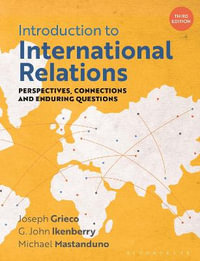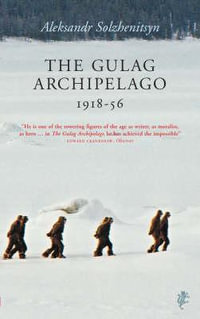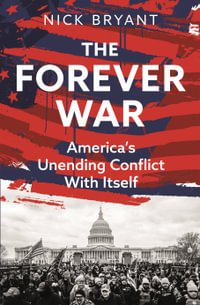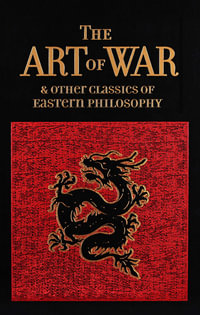
Philippine Security in the Age of Terror
National, Regional, and Global Challenges in the Post-9/11 World
By: Rommel Banlaoi
Hardcover | 13 October 2009 | Edition Number 1
At a Glance
376 Pages
24.1 x 15.6 x 2.3
Hardcover
RRP $200.00
$144.90
28%OFF
or 4 interest-free payments of $36.23 with
orAvailable for Backorder. We will order this from our supplier however there isn't a current ETA.
As the twelfth most populous nation, the Philippines' diverse religious and ethnic population makes it an ideal example of the changing tenet of what is deemed national security—post 9/11. Issues previously considered social or public are now viewed as security issues. Food production is now analyzed in the context of food security and environmental degradation is now a part of environmental security. This broadened perspective is not unique to the Philippines, but—thanks to the island nation's long struggle with issues of Muslim radicalism, democracy, and globalization—it serves as a model worth studying. And no one is better positioned to take on this study than Rommel C. Banlaoi, Chairman and Executive Director of the Philippine Institute for Peace, Violence, and Terrorism Research.
In Philippine Security in the Age of Terror: National, Regional, and Global Challenges in the Post-9/11 World, Banlaoi illustrates the increasing complexity of the issues. Divided into three sections, the book explores why a nation's security can no longer be just about its military or only about what is happening within its borders.
- Section I reviews issues specific to the Philippine people, including politics, national identity, globalization, and local and military security.
- Section II moves to bilateral security issues to report on security interests and collaborations with the United States, China, and Australia—as well as with India, Japan, and Russia.
- Section III examines selected global, regional, and multilateral issues such as maritime security, piracy, and the ASEAN Regional Forum.
The comprehensive approach and coverage within the book reflects the author's diverse interests as a scholar of politics, security, terrorism, and international relations. More importantly, it documents an intellectual journey that national policymakers across the world need to consider if they hope to achieve the shift in thinking that will promote the well-being of the world's populations as the strategic centerpiece of any war on terrorism.
Industry Reviews
| Preface | p. xv |
| Acknowledgments | p. xix |
| About the Author | p. xxiii |
| National Security Issues | |
| Identity Politics and Philippine National Security in the Age of Terror | p. 3 |
| Introduction | p. 3 |
| The Problematic Concept of Security | p. 4 |
| Frameworks for Analysis | p. 5 |
| National Security in the Philippines: Concept, Formulation, and Organization | p. 8 |
| The Practice of National Security in the Philippines | p. 11 |
| Identity Politics and the Roots of Insurgency | p. 17 |
| Toward a People-Oriented National Security Paradigm for the Philippines: Prospects for Human Security | p. 20 |
| Conclusion | p. 21 |
| Endnotes | p. 21 |
| Globalization and Nation-Building in the Philippines: State Predicaments in Managing Society in the Midst of Diversity after 9/11 | p. 27 |
| Introduction | p. 27 |
| The Nature of the Philippine State | p. 28 |
| Premature Philippine State | p. 29 |
| A Weak State | p. 30 |
| Diversities and Tensions in Philippine Society | p. 31 |
| Ethnic Diversity | p. 32 |
| Religious Diversity | p. 32 |
| Socioeconomic Diversiry | p. 34 |
| The Impact of Globalization on Nation-Building | p. 35 |
| Globalization and the Philippine State | p. 36 |
| Reform of the Bureaucracy | p. 37 |
| Electoral Reform | p. 37 |
| Political Party Reform | p. 38 |
| Socioeconomic Reform | p. 39 |
| Conclusion | p. 39 |
| Endnotes | p. 39 |
| "Radical Muslim Terrorism" in the Philippines | p. 45 |
| Introduction | p. 45 |
| What Is Radical Muslim Terrorism? | p. 46 |
| Brief Historical Background | p. 47 |
| The Moro National Liberation Front | p. 50 |
| The Moro Islamic Liberation Front | p. 53 |
| The Abu Sayyaf Group | p. 56 |
| Rajah Solaiman Islamic Movement | p. 62 |
| Abu Sofia Group | p. 66 |
| AI-Khobar Group | p. 67 |
| Conclusion | p. 67 |
| Endnotes | p. 68 |
| Local Government Response against Terrorist Threats in the Philippines: Issues and Prospects | p. 75 |
| Introduction | p. 75 |
| Terrorism in the Philippines: A Local Government Menace | p. 77 |
| Philippine Strategy to Combat Terrorism | p. 77 |
| Local Government Response to Combat Terrorism | p. 79 |
| Issues and Prospects for Good Local Governance | p. 87 |
| Conclusion | p. 91 |
| Endnotes | p. 93 |
| The Military and Democracy in the Philippines in the Age of Terror: Toward Democratic Control of the Armed Forces of the Philippines | p. 97 |
| Introduction | p. 97 |
| Framework for Analyzing Military Interventionism: Toward Democratic Control of the Armed Forces | p. 98 |
| A Brief History of the Philippine Military | p. 100 |
| Military Intervention in Philippine Domestic Politics | p. 101 |
| The Role of the Military in Philippine Defense Policy | p. 106 |
| The Role of the Military in Philippine Foreign Policy | p. 107 |
| Conclusion | p. 108 |
| Endnotes | p. 109 |
| Security Sector Governance in the Philippines: A Policy Challenge in the Age of Terrorism | p. 113 |
| Introduction | p. 113 |
| The Security Sector in the Philippines | p. 114 |
| The State of Security Sector Governance | p. 120 |
| Challenges of Security Sector Governance in the Age of Terrorism | p. 128 |
| Conclusion and Policy Recommendations | p. 133 |
| Endnotes | p. 136 |
| Philippine Elections and National Security after 9/11: Thinking Outside the Ballot Box? | p. 143 |
| Introduction | p. 143 |
| The Socioeconomic and Security Contexts of Philippine Elections | p. 145 |
| Face, Phase, and Pace of Philippine Elections | p. 146 |
| The Rise of Celebrity Politics | p. 148 |
| The Party List Alternative | p. 151 |
| The Role of the Church | p. 152 |
| Rumors of Military Intervention | p. 153 |
| Conclusion | p. 154 |
| Endnotes | p. 155 |
| Bilateral Security Issues | |
| The Role of Philippine-American Relations in the Global Campaign against Terrorism: Implications for Regional Security | p. 161 |
| Introduction | p. 161 |
| A Historical Background to Relations | p. 162 |
| The Philippines as a Strategic American Colony: 1898-1935 | p. 163 |
| America in the Philippine Defense System | p. 163 |
| The Japanese Colonial Rule | p. 164 |
| The Philippine Independence | p. 164 |
| The "Unequal" Treaties | p. 164 |
| The Idea of Collective Defense | p. 165 |
| The Bases Pull Out and the Fading of Philippine-American Relations | p. 165 |
| The Visiting Forces Agreement (VFA) Ratification | p. 166 |
| The War on Terrorism and the Reinvigoration of Philippine-American Relations | p. 166 |
| The Moro Islamic Liberation Front - The Al Qaeda Link | p. 166 |
| The Abu Sayyaf Group - The AI Qaeda Link | p. 167 |
| The Mutual Defense Treaty and the Philippine-American Response to Terrorism | p. 168 |
| The VFA, Republic of the Philippines (RPJ-U.S. Balikatan 2002-1 Exercises and the War on Terrorism | p. 169 |
| Implications for Regional Security | p. 170 |
| A Regional Coalition against Terrorism | p. 171 |
| The China Factor | p. 171 |
| The Taiwan Issue and the Bases Factor | p. 172 |
| Conclusion | p. 173 |
| Endnotes | p. 174 |
| Philippines-China Defense and Military Cooperation: Problems tand Prospects in the Post-9/11 Era | p. 179 |
| Introduction | p. 179 |
| Backgrond on Philippines-China Defense and Military Cooperation | p. 180 |
| Moment of Amity, 1945-1949 | p. 180 |
| Era of Hostility, 1949-1974 | p. 181 |
| Normalization Period, 1975-1995 | p. 181 |
| Troubled Relations, 1995-2000 | p. 182 |
| Sustaining Friendship, Enhancing Cooperation, 2000 and Beyond? | p. 184 |
| Current Situation in Philippines-China Defense and Military Cooperation: Cautious Cooperation? | p. 186 |
| Problems in Phiiippines-China Defense and Military Cooperation | p. 188 |
| The Philippines-American Security Alliance | p. 188 |
| China-U.S. Strategic Competition | p. 191 |
| The South China Sea Dispute | p. 193 |
| The Taiwan Issue | p. 194 |
| Prospects for Cooperation after 9/11 | p. 195 |
| International Terrorism | p. 195 |
| Maritime Security | p. 196 |
| Transnational Crimes | p. 196 |
| Conclusion | p. 197 |
| Endnotes | p. 198 |
| Broadening Philippine-Australia Defense Relations in the Post-9/11 Era: Issues and Prospects | p. 205 |
| Introduction | p. 205 |
| The Origin of Philippine-Australia Defense Relations | p. 206 |
| The State of Philippine-Australia Defense Relations | p. 207 |
| Geographic Proximity | p. 210 |
| Cultural Familiarity | p. 210 |
| Shared Regional Security Perspectives | p. 211 |
| Relations with the United States | p. 211 |
| Terrorism in Southeast Asia | p. 212 |
| The South China Sea Disputes | p. 213 |
| Maritime Security | p. 213 |
| The Rise of China | p. 214 |
| Broadening Philippine-Australia Defense Relations: Implications for Regional Security | p. 214 |
| Endnotes | p. 216 |
| Global,Refional,and Multilateral Secutiry Issues | |
| Global Security Issues and Concerns after 9/11: Threats and Opportunities for the Philippines | p. 223 |
| Introduction | p. 223 |
| Global Security Issues and Concerns after 9/11 | p. 224 |
| Terrorism as a Paramount American Global Agenda | p. 224 |
| The Advent of Globalization | p. 225 |
| The World Trade Organization (WTO) | p. 226 |
| Weapons of Mass Destruction (WMD) | p. 226 |
| The Rise of China | p. 226 |
| Regional Issues and Trends after 9/11 | p. 227 |
| Europe | p. 227 |
| The Asia-Pacific | p. 228 |
| The Middle East | p. 229 |
| Africa | p. 229 |
| Latin America | p. 230 |
| Threats and Opportunities for the Philippines | p. 230 |
| Philippine-American Security Relations | p. 230 |
| Philippine-Australia Security Relations | p. 231 |
| Philippine-China Security Relations | p. 232 |
| Philippine-Japan Relations | p. 232 |
| Philippine-Association of Southeast Asian Nations (ASEAN) | |
| Relations | p. 233 |
| Philippine-Asean Regional Forum (ARF) Relations | p. 233 |
| Philippine-Middle East Relations | p. 233 |
| Philippine-European Union (EU) Relations | p. 234 |
| Conclusion | p. 234 |
| Endnotes | p. 235 |
| Maritime Security Outlook for Southeast Asia in the Post-9/11 Era | p. 239 |
| Introduction | p. 239 |
| Southeast Asia: A Piracy Hot Spot? | p. 241 |
| Cost of Piracy | p. 241 |
| Causes of Piracy | p. 242 |
| Piracy, Maritime Terrorism, and Shipping Trends | p. 245 |
| The Regional Maritime Security Initiative | p. 247 |
| Building National Capacities to Combat Piracy and Maritime Terrorism: Force Modernization through Defense Development | p. 248 |
| Regional Responses | p. 250 |
| Conclusion | p. 251 |
| Endnotes | p. 251 |
| Nontraditional Security Issues in the Southeast Asian Maritime Domain: Implications for the Indian Ocean | p. 257 |
| Introduction | p. 257 |
| Southeast Asia and the Concept of Maritime Regional Security Complex (MRSC) | p. 258 |
| Nontraditional Security (NTS) in Maritime Southeast Asia | p. 259 |
| Piracy and Armed Robberies against Ships | p. 261 |
| People Smuggling and Human Trafficking | p. 262 |
| Small Arms Trafficking | p. 264 |
| Trafficking in Illicit Drugs | p. 265 |
| Maritime Terrorism | p. 265 |
| Association of Southeast Asian Nations (ASEAN) Policies and Operational Responses to NTS Threats | p. 267 |
| Regional Cooperation on NTS the ASEAN Way | p. 267 |
| Operational Responses to NTS Threats in Southeast Asia | p. 269 |
| Implications for the Indian Ocean | p. 271 |
| Toward Interregional Maritime Security Cooperation | p. 274 |
| Conclusion | p. 275 |
| Endnotes | p. 275 |
| The ASEAN Regional Forum and Security Community Building in the Asia-Pacific after 9/11: Lessons from European Integration | p. 281 |
| Introduction | p. 281 |
| Security Community: An Analytical Framework | p. 282 |
| Attempts to Develop a Security Community in the Asia-Pacific | p. 285 |
| The ASEAN Regional Forum (ARF) and Constraints to "Security Community" Building in the Asia-Pacific | p. 289 |
| Security Community Building: Lessons from European Experience | p. 291 |
| What Lessons Can the Asia-Pacific Learn from the European Experience? | p. 293 |
| The ARF as a Possible Security Community in the Asia-Pacific in the | |
| Post-9/11 Era? | p. 294 |
| Conclusion | p. 296 |
| Endnotes | p. 296 |
| Security Cooperation and Conflict in Southeast Asia after 9/11:Constructivism, the ASEAN Way, and the War on Terrorism | p. 303 |
| Introduction | p. 303 |
| Constructivism: Understanding the ASEAN Way of Security Cooperation and Conflict Management | p. 305 |
| The ASEAN Way of Building a Security Community: Security Cooperation and Conflict Management after 9/11 | p. 307 |
| Security Community, the ASEAN Way, and the War on Terrorism in Southeast Asia | p. 308 |
| The ASEAN Way, Regional Security Cooperation, and the Individual Country's Response to Terrorism | p. 313 |
| Indonesian Response to Terrorism | p. 313 |
| Malaysian Response to Terrorism | p. 314 |
| Philippine Response to Terrorism | p. 315 |
| Singapore Response to Terrorism | p. 317 |
| Thailand Response to Tertorism | p. 317 |
| Conclusion | p. 318 |
| Endnotes | p. 319 |
| The Philippines and ASEAN at Forty: Achievements, Challenges, and Prospects in Regional Security Cooperation | p. 325 |
| Introduction | p. 325 |
| The Philippines and the Evolution of Asean Security Cooperation during the Cold War | p. 326 |
| Philippine and Asean Security Cooperation after the Cold War | p. 330 |
| Philippine and Asean Security Cooperation during the 1997 Financial Crisis | p. 330 |
| Philippine and the Asean Security Cooperation after 9/11 | p. 331 |
| The Philippines and the Asean Security Community | p. 332 |
| Conclusion | p. 333 |
| Endnotes | p. 334 |
| Index | p. 337 |
| Table of Contents provided by Ingram. All Rights Reserved. |
ISBN: 9781439815502
ISBN-10: 143981550X
Published: 13th October 2009
Format: Hardcover
Language: English
Number of Pages: 376
Audience: Professional and Scholarly
Publisher: Taylor & Francis Inc
Country of Publication: GB
Edition Number: 1
Dimensions (cm): 24.1 x 15.6 x 2.3
Weight (kg): 0.68
Shipping
| Standard Shipping | Express Shipping | |
|---|---|---|
| Metro postcodes: | $9.99 | $14.95 |
| Regional postcodes: | $9.99 | $14.95 |
| Rural postcodes: | $9.99 | $14.95 |
How to return your order
At Booktopia, we offer hassle-free returns in accordance with our returns policy. If you wish to return an item, please get in touch with Booktopia Customer Care.
Additional postage charges may be applicable.
Defective items
If there is a problem with any of the items received for your order then the Booktopia Customer Care team is ready to assist you.
For more info please visit our Help Centre.
You Can Find This Book In

Introduction to International Relations
3rd Edition - Perspectives, Connections and Enduring Questions
Paperback
RRP $102.95
$85.90
OFF
This product is categorised by
- Non-FictionEconomicsMicroeconomicsDomestic Trade
- Non-FictionEngineering & TechnologyOther Technologies & Applied SciencesMilitary Engineering
- Non-FictionComputing & I.T.Computer Security
- Non-FictionPolitics & GovernmentInternational Relations
- Non-FictionPolitics & GovernmentPolitical ActivismTerrorism
- Non-FictionPolitics & GovernmentPublic Administration
- Non-FictionSocial Services & WelfareCrime & Criminology
- Non-FictionIndustry & Industrial StudiesService IndustriesSecurity Services






















